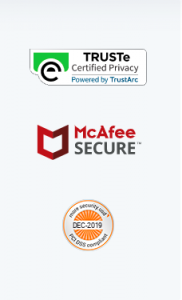Discussion question
This week you were provided with a case scenario about 3-year-old Timmy. Based on what you read in the scenario and in Chapter 4, consider and address the following questions:
How does exclusion relate to self-determination?
To what extent do clients have the right to know about and be involved in their own assessment and intervention planning?
To what extent is exclusion appropriate?
Is exclusion ethical?
What is your recommendation–exclusion or inclusion? Explain your rationale
RESPOND TO 2 OTHER CLASSMATESS.
Week 4 Discussion Case Scenario
Instructions:
Use this case scenario to address this week?s discussion board.
SCENARIO: Proposed here is an example of a treatment conference in a diagnostic and
treatment center for children with multiple physical and psychological disabilities. The
client Timmy, 3, has severe cerebral palsy, a disability resulting from damage to the brain
before, during, or shortly after birth that results in problems with muscular coordination
and speech (Mish, 2008). Timmy has very little control of his extremities, torso, face, and
mouth. He has some limited control of his eyes.
After Timmy is referred for assessment, extensive testing is performed by speech,
occupational, and physical therapists. A physician conducts a thorough physical
examination and orders relevant tests. Sometimes, a geneticist is involved to establish the
etiology of the disorder. However, Timmy experienced oxygen deprivation at birth due to
the umbilical cord being wrapped around his neck. Since the etiology of the disability has
been established, the program director, a physician, determines that a genetic assessment
is unnecessary. A psychologist conducts perceptual and ability testing. Finally, a social
worker carries out a family assessment.
All evaluators subsequently attend the treatment conference. This particular group
cannot be considered a team because it does not work together on a regular basis. For
example, there are five occupational therapists and three social workers. The configuration
of participants for any particular client varies dramatically as only one professional per
discipline is involved with each case. During the treatment conference, participants share
their findings and prepare a treatment plan. For children like Timmy, who require ongoing
treatment and therapy, an annual treatment conference is automatically scheduled. Only
those professionals involved in ongoing treatment attend later treatment conferences. For
instance, a speech therapist would no longer be involved with the case if the child did not
require speech therapy. Since Timmy has such extensive treatment needs, professionals
from all disciplines will be involved in future conferences.
This agency?s policy is to exclude parents and clients from treatment conferences.
Some agencies invite clients and/or their families to attend such conferences. Other
agencies invite clients and/or families to attend only a designated portion of the conference.
Some agencies such as the one providing services to Timmy indicate that having clients
and other outsiders present interferes with the frank presentation of information about
clients and their families. This agency?s staff also feel that conference content may be too
emotionally stressful for clients and their families to hear.
Match the following types of groups with the respective descriptions:
Type of Group
1. Task groups
2. Teams
3. Treatment groups
4. Delegate councils
5. Support groups
6. Boards of directors
7. Educational groups
8. Growth groups
9. Administrative groups
10. Treatment conferences
11. Committees
12. Socialization groups
13. Social action groups
14. Therapy groups
15. Staff development groups
_____ A. include various clusters of supervisors and managers who may be organized
to maintain and improve agency functioning; they include staff such as
supervisors, directors, managers, and department heads.
_____ B. are groups of elected or appointed representatives from a series of agencies
or units within a single agency who serve to achieve such goals as enhancing
cooperation among professionals in different units or agencies, reviewing
issues relevant to service provision, or pursuing social action goals
(Toseland & Rivas, 2009).
_____ C. are those aimed at expanding self-awareness, increasing self-potential, and
maximizing optimal health and well-being.
_____ D. help individuals solve personal problems, change unwanted behaviors, cope
with stress, and improve group members? quality of life.
_____ E. provide information to participants.
_____ F. are groups of people authorized to formulate the organization?s mission,
objectives, and policies in addition to overseeing the organization?s ongoing
activities.
_____ G. apply the principles of group dynamics to solve problems, develop
innovative ideas, formulate plans, and achieve goals.
_____ H. are groups of people ?delegated to consider, investigate, take action on, or
report on some matter? (Mish, 2008, p. 250).
_____ I. help participants improve interpersonal behavior, communication, and
social skills so that they might better fit into their social environment.
_____ J. are groups who meet to establish, monitor, and coordinate service plans on
the behalf of a client system.
_____ K. consist of participants who share common issues or problems and meet on
an ongoing basis to cope with stress, give each other suggestions, provide
encouragement, convey information, and furnish emotional support.
_____ L. are groups of two or more people gathered together to work collaboratively
and interdependently with each other to pursue a designated purpose.
_____ M. are formed to engage in some planned change effort to shift power and
resources in order to modify or improve aspects of their macro social or
physical environment.
_____ N. establish goals to improve, update, and refine workers? skills, the ultimate
goal being to improve service to clients (Toseland & Rivas, 2009).
_____ O. help members with serious psychological and emotional problems change
their behavior; they are led by an expert whose emphasis is placed on
?Remediation and rehabilitation? (Toseland & Rivas, 2009, p. 25).
2. After matching, answer and respond to the following:
a. What concepts in the definitions characterize each group and make that group unique?
b. What are the similarities and differences among the groups?
c. Describe an agency setting where each group might be appropriate. Give specific examples
of the type of problems and clientele each group might include. (For example, a committee
might be formed in a county social services agency to address how offices are spaced and
allocated within the agency, or a therapy group for bulimics might be held at a community
counseling center.)


